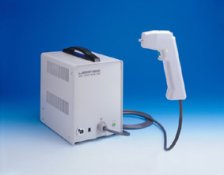Sparky
Member
So- it's been a few years since I installed copper 1/2 lines deep deep inside the walls of my space - running all the way to my darkroom. I'm getting bored of using canned air. So now's come the time to hook up mr. compressor...! Has anyone done this in their space...? I'd imagine there'd be at least a FEW... any suggestions from transitioning from the copper to the compressor and a coiled hose fitting..? Any suggestion for guns at the darkroom end - ones that won't blow the neg clean out of the film holder?? Also - what about filters...? Suggestions? THX.











